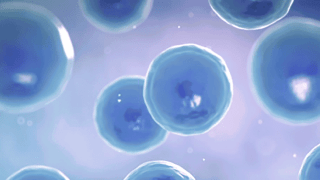Sometimes the cells of the immune system can be “fooled” into mounting a less aggressive response to some types of cancer cells, which the body may not always recognize as foreign particles that should be eliminated.
In order for the immune system to recognize foreign cells and organize a response, it uses a series of “checkpoints.” These checkpoints are molecules on certain immune cells that typically need to be activated in order to kick-start a response from the immune system.
However, cancer cells can be tricky, and some may use these same checkpoints to avoid being attacked by the immune system. “Cancer cells are very smart,” said Daneng Li, M.D., assistant clinical professor in the Department of Medical Oncology & Therapeutics Research at City of Hope, who specializes in geriatric oncology and gastrointestinal cancers. “Cancer cells have certain mechanisms that they can use to evade this immune response.”
Cancer cells can express certain proteins, called checkpoint proteins, on their surface. “These proteins tell immune system cells, such as activated T cells, that they aren’t necessarily foreign, and should not necessarily be attacked,” explained Li. “This leads to decreased activity by the activated T cells, which are our key immune cells for attacking anything that’s foreign.”
Because cancer tumors can express these checkpoint proteins and bind to the receptors in the activated T cells, the T cells are tricked into slowing down, or downregulating, their response.
The best example of this interaction is related to the PD-L1 protein, which can be expressed on the surface of some cancer tumor cells. “Usually, tumors will express a protein called PD-L1," explained Li. "This will bind to the PD-1 protein on the activated T cell, and when it binds, it tells the activated T cell to downregulate its activity.”
That’s when checkpoint inhibitor drugs can be used to block the interaction between the activated T cells and the tumor cells. “A checkpoint inhibitor drug will bind to the PD-1 protein on the activated T cell, preventing the PD-L1 protein on the tumor from binding to it," said Li. "This prevents the tumor from telling the activated T cells to downregulate. So now, your activated T cells remain active, and can potentially engage with the tumor.”
Less effective for some cancer types
Not all cancers initiate an immune response, so some may not respond to checkpoint inhibitors. The use of checkpoint inhibitors began with treating melanoma, a type of skin cancer, where they dramatically changed the survival rates for patients with this type of cancer. Checkpoint inhibitors have also proven successful in the treatment of lung cancer, head and neck cancer, kidney cancer, endometrial cancer, liver cancer and (along with chemotherapy) some aggressive types of breast cancer.
However, checkpoint inhibitors are less effective for cancers that “don’t have a lot of mutation, or which are known as ‘bland’ tumors,” according to Li. “We haven’t had as much success so far with using checkpoint inhibitors to treat the majority of patients with colon cancer, or other slow-growing cancers such as breast cancer or prostate cancer.”
But that may be changing. “Even where we haven’t seen a tremendous amount of success using one checkpoint inhibitor drug, there are ongoing trials that show an increased response when we combine multiple checkpoint inhibitors, or when we combine them with other drugs,” said Li. “These trials may be starting to push the needle and show us some additional response.”
Potential side effects
Like most cancer treatments, there are potential negative side effects to consider. “Whenever you’re stimulating the immune system, it has the potential to become too active,” explained Li. “When this happens, the immune system is not only engaging and targeting cancer cells, but may also attack regular cells in the body. Depending on which of these healthy cells the immune system attacks, you can have different types of side effects. For example, if the immune system attacks the skin, you may develop a rash. If it attacks the GI tract, you could have diarrhea. If it attacks the heart, you could experience a series of heart conditions. If it attacks the lungs, you could develop an immune-related pneumonitis. Because an overactive immune system can attack any cell in the body, it can cause several types of autoimmune effect.”
Because there’s no way of knowing which healthy cells will be targeted by an overactive immune system, side effects can be difficult to predict. “Right now, we don’t have any predictive biomarkers to know who will develop immune-related reactions to checkpoint inhibitors,” said Li. “That’s a key area of ongoing research, with the goal of ultimately providing more personalized treatment for patients.”
The future of checkpoint inhibitors
While the use of checkpoint inhibitors is changing the face of treatment for some types of cancer, research into how they can be combined with other therapies is ongoing.
“We’ve made significant progress in cancer treatment using checkpoint inhibitors,” said Li. “But we’ve learned that, often, using one type of checkpoint inhibitor isn’t enough. Learning how we can combine checkpoint inhibitors with other classes of drugs to further stimulate the immune system’s response is very exciting.”
There’s also potential for the use of checkpoint inhibitors, combined with reengineered cells from our own immune systems, to create an additional response. “We’re looking at combining checkpoint inhibitors with cellular-based therapies, where we take a patient’s immune system cells and genetically reengineer them to have a specific target. When combined with checkpoint inhibitors, we’re hoping to potentially create an even greater targeted immune response. This will allow us to bring this type of a therapy to a much larger group of patients.”
